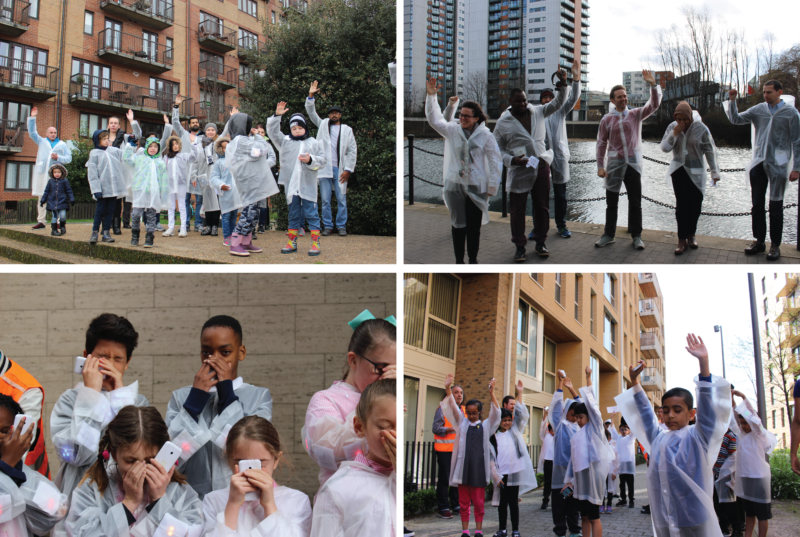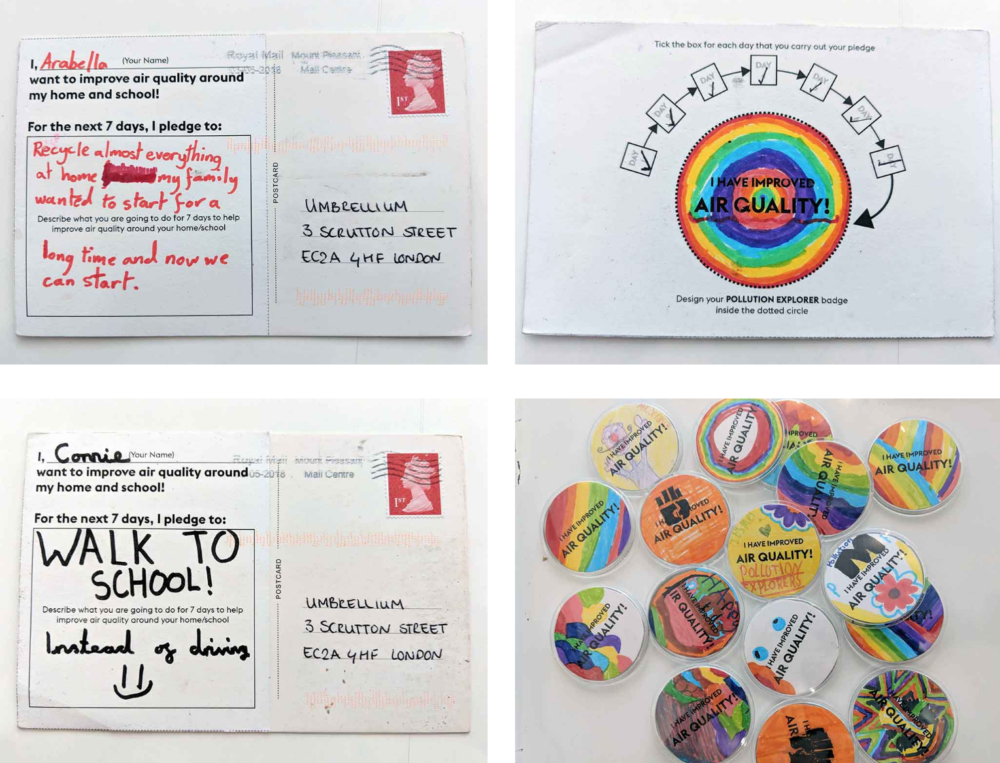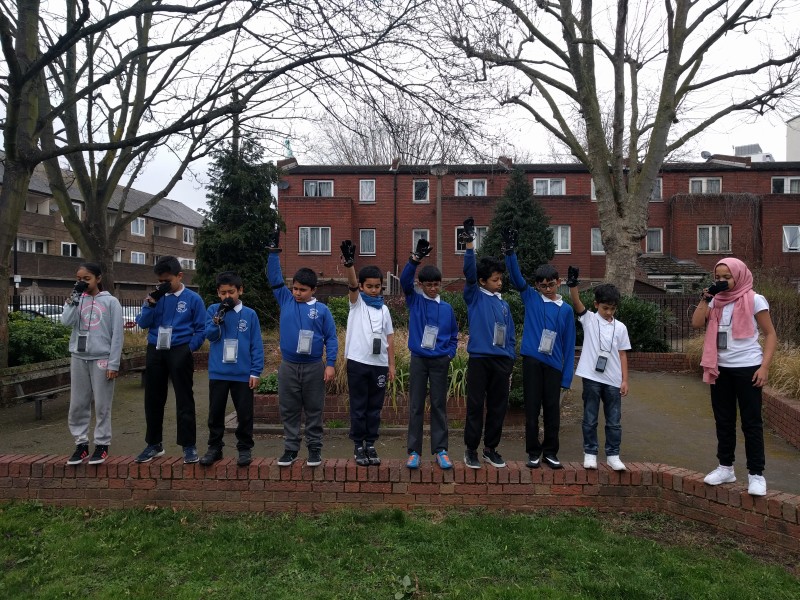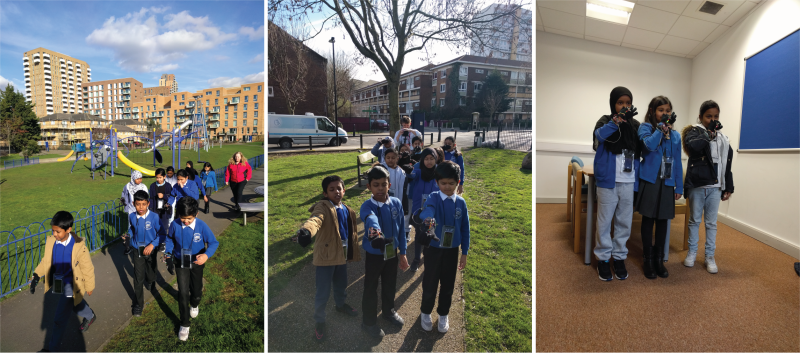WearAQ combines people’s subjective perception of their environment with wearable technology and machine learning algorithms to investigate our personal agency and responsibility in tackling air quality issues.
Project’s Lead Designer at Umbrellium
Presented at: Mutek Festival 2017, Digital Design Weekend 2017 at V&A, Neotopia: Data and Humanity Exhibition at Nabi Art Centre, Seoul and alt.barbican showcase at Barbican Centre, London
What can we do about pollution? It’s such a large issue that we often feel disempowered because it seems like nothing any of us does on our own will have any effect.
WearAQ is a toolset and community engagement methodology designed for people to act collectively on air quality issues. It harnesses people’s subjective perception of their environment and uses wearable technology and machine learning processes to emphasise personal agency and responsibility in tackling complex issues surrounding air pollution.
Phase 1 of WearAQ was piloted in Tower Hamlets with 20 school children in 2017. We then worked in early 2018 with 100 local residents, council members, activists and school children from neighbourhood schools and community centres across Tower Hamlets in WearAQ Phase 2. The next planned deployment, Pollution Explorers, will involve participants from across the EU, including Berlin, Oslo and Brussels in Autumn 2018.
WearAQ Phase 2
In WearAQ Phase 2, we worked with a total of 100 local residents, council members, activists and school children from neighbourhood schools and community centres across the Borough of Tower Hamlets. Through the engagement, participants shared personal experiences of air pollution, made a statement on the air quality with their own physical actions of recording perceptual data using wearable technology and helped to fill in missing ‘gaps’ of air quality data in order to make sense of their own impact to the environment. Participants were also further challenged to make a pledge on an action that they each can take everyday to tackle air quality issues in their neighbourhood for a period of time. Their actions were each tracked through a custom designed prepaid postcard that they filled in and returned to Umbrellium for analysis.
WearAQ Phase 2 has demonstrated that people’s ability to assess the quality of air is fairly high in some instances, and a high percentage of participants have shown dedication in commiting to an action to tackle air quality for a short period of time in their everyday life, with 90% of them carrying out the committed action they pledged to do for 7 days consecutively.
Refer to the blogpost series for more information on the experiments:
- Blogpost part 1 – Pollution Exploring Through Our Subjective Perception and Collective Agency
- Blogpost part II (by Usamah Khan) -WearAQ Phase 2 Findings
Special thanks to:
- All 100 local residents and students from Tower Hamlets who helped explore air quality around their neighbourhood.
- Iram Quraishi, Community Programme Director from LoopLabs
- Caoimhe Goggins, Community Coordinator from LoopLabs
- Tower Hamlets Council
- Participating teachers from Marner Primary School, Bonner Primary School and English Martyrs Roman Catholic Primary School
- Teviot Community Centre
- Mudchute City Farm
- Usamah Khan, data scientist
- Nurri Kim, filmmaker
Funded by: OrganiCity
WearAQ Phase 1
I worked with students at the Marner Primary school in Tower Hamlets London to go out into the surrounding neighbourhood, measure air quality both technologically and through their own perceptions, and recorded their subjective experience using low tech wearable devices that catalogued their gestures. This data was compared with measurements from expensive, highly calibrated pollution monitoring equipment and other data like temperature, wind and humidity to look at correlations and contrasts.
The perceptual data were then used in various data science experiments:
- Experiment 1: to contrast and correlate with measurements from mobile pollution monitoring equipment and photos taken by students on their environment during the walk
- Experiment 2: as ground truth data that are compared with predicted perception data created from conducting data science and machine learning experiments by using existing public data sources found on platforms such as London Air Quality Network and OrganiCity Urban Data Observatory to pinpoint specific datasets that could affect the AQ in the identified journeys
The result of the experiment has been revealing, we were able to obtain an 8/8 correct predictions on students perceptual data based on our machine learning model. We were also able to obtain a 6/8 accuracy when we compared recorded perceptual data with data from the mobile pollution monitoring equipment. We recognised that there was a lack of data, however it was adequate for a first prototype and have proven via this experiment that there is a correlation between perceptual data to actual air quality measurements.
Refer to the blogpost series for more information on the experiments:
- Blogpost part 1 – challenges faced designing the technology and our experience of structuring participation with the students
- Blogpost part II -findings and data collected from the workshop sessions with the students
- Blogpost part III (by Usamah Khan) -machine learning experiments conducted to measure quality of air through our perceptual experience
Special thanks to:
All the wonderful and enthusiastic students from Marner Primary School who helped explore air quality around their neighbourhood in this project
Carol Doherty, Assistant Head / Shine Project Manager of Marner Primary School
Usamah Khan, data scientist
Mara Balestrini, technical advisor
Nurri Kim, filmmaker
Funded by: OrganiCity




